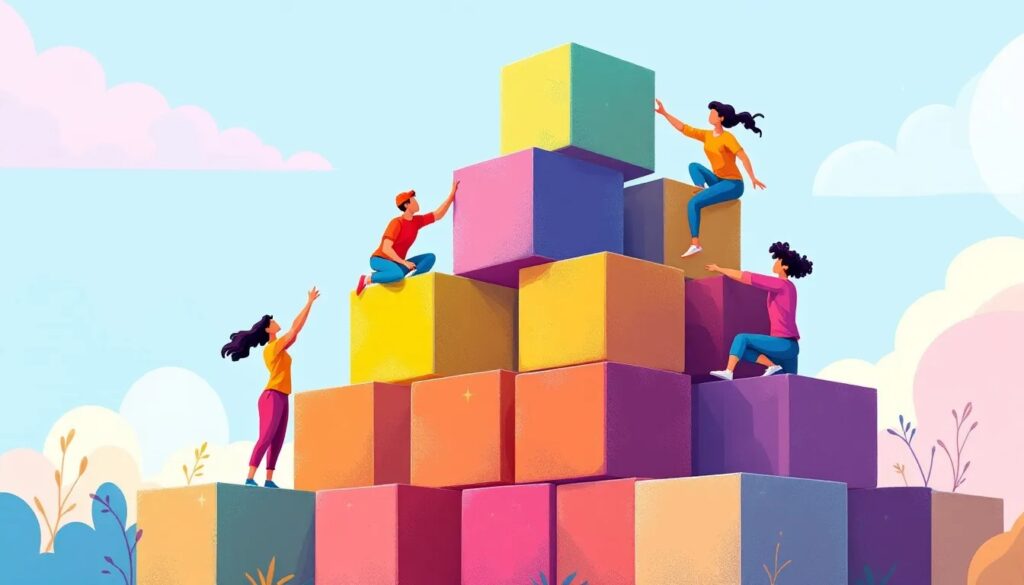Ask any creative team what they need to do their best work, and sure you’ll hear the usual: more time, better briefs, fewer last-minute changes. But dig a little deeper, and you’ll find something bigger underneath it all: Creative teams crave a collaborative culture.
Not the “we use Slack and have a brainstorm sometimes” kind. We’re talking about an environment where ideas are shared early, feedback is frictionless, and every creative project feels like a team effort, not a solo mission. At the heart of every thriving creative team is a strong collaborative culture.
And while that kind of culture sounds dreamy, actually building it? Way less tidy. Especially when your team’s remote, running multiple creative projects, or bouncing between tools just to get one video out the door.
So… how do you actually do it?
What Is Collaborative Culture Anyway?
A collaborative culture in a creative team means:
- Everyone understands the ‘why’ behind the work.
- Half-formed ideas are welcomed, not judged!
- Feedback lands with clarity and kindness, not confusion or criticism.
- There’s trust in the process (and in each other).
- And tools? They help ideas move, not get buried.
It’s more like playing in a jazz band than marching in formation; everyone’s in rhythm, listening, improvising, and building something beautiful together. Here’s how team collaboration is made easy for teams without sacrificing creativity or clarity.
What Gets in the Way of Creative Collaboration?
Even the most talented teams hit friction when the setup isn’t built for creative flow. Wouldn’t you agree?
- The feedback black hole: You share a draft. Then… radio silence. Or you get a vague “Hmm, it’s not working” with zero clarity.
- Too Many Tools, Not Enough Context: Files in Drive, feedback in email, updates in Slack, and now you start playing a detective trying to figure out which version is “final.”
- Creative Fear: People hold back rough ideas out of fear they’ll get shut down too soon.
- Feedback Chaos: Ten people giving conflicting input, and no one knows who’s actually in charge. Hello, Frankenstein campaign.
These blockers don’t just slow progress, they erode collaborative culture over time.
What Doesn’t Work (Even If It Looks Good on Paper)
Here are a few “on-paper” strategies that don’t hold up in real creative workflows. Some traps we’ve seen (and maybe fallen into ourselves):
- Over-relying on generic PM tools. Sure, Trello or Asana are great for tasks, but what about visuals, versioning, or side-by-side feedback on designs?
- All feedback in meetings. Real-time reviews are great, but if feedback only happens in live calls, you lose the benefits of async creative flow.
- Too many approval levels. If every banner needs sign-off from five departments, you’re not collaborating – you’re committee-ing!
- Hyper-detailed process docs no one reads. Creatives don’t want a 30-step approval flow. They want clarity, not red tape.

What Actually Works for Creative Collaboration
The best creative cultures don’t happen by accident; they’re built on purpose. And when it comes to getting collaboration right, this take on building a collaborative workplace culture really hits the nail on the head. It’s about trust, clear communication, and giving people the space to do their best work together. Here’s what actually helps teams collaborate without losing their spark:
1. Creative Trust
Give people the space to bring their voice to the work. That means not over-policing how ideas are presented, and respecting each person’s craft.
“When creatives trust each other and the process, magic happens faster.”
2. Aligned Tools, Not More Tools
One of the best things you can do for creative projects? Stop scattering feedback across 10 tools. Choose platforms that lets you:
- Annotate visuals and videos
- Track version history
- Centralize files and comments
(At ButtonShift, we learned this the hard way when we were juggling adding feedback, struggled between drive folders for finding the right version, and comments. Things got lost, versions overlapped, and it slowed everything down. That experience shaped how we designed our feedback and annotation tools – so everything lives in one contextual workflow. Well)
3. Build Culture With Micro Culture
Small habits go a long way. Try things like:
- Weekly “creative check-ins” (not just task updates)
- Moodboard drop sessions for early idea sharing
- Dedicated “Feedback Hour” blocks – so people aren’t chasing comments all day.
4. Fewer, Better Feedback Loops
Define who gives feedback when and make it contextual. Nothing kills flow like vague feedback from someone out of sync with the brief.
Use frameworks like:
- “Yes, No, Maybe” tags on assets to signal direction
- Time-stamped annotations on video edits
- Clear versioning rules (e.g., only final versions go to clients)
5. Visible Creative Goals
Share the story behind each piece of work. What are we trying to say? Why does this campaign matter? When creatives understand the intent, collaboration becomes more meaningful. It’s not just about delivering your work – it’s about aligning on purpose. When the ‘why’ is visible, everyone can shape the ‘how’ with more clarity, passion, and creativity. It brings direction to the chaos, lets ideas flow with intention, and ensures that every edit, comment, or version serves a shared vision, not just a deadline.

Real Talk: Culture Isn’t a Feature
You can’t just plug in a new tool and suddenly have creative flow. Culture isn’t a feature, it’s something you build, day by day. But here’s the thing: the right tools can absolutely clear the path.
At ButtonShift, we’ve watched teams shift from chaotic email threads and lost feedback to a rhythm that just works. One team went from “Where’s the latest version?” to “Hey, feedback’s in, we’re good to go.” Designers feel heard. Marketers get clarity. And projects move faster with fewer meetings.
Want to dig deeper? Here’s how to build a collaborative culture that actually sticks!
Final Thoughts: Build the Culture You Want to Create In
Culture is the soil your best ideas grow. It’s what turns a group of individuals into a team. What transforms scattered ideas into powerful campaigns? And what helps every creative project move faster, with less stress and more joy.
If your tools are failing your team, maybe it’s time to invest in a platform that actively supports a collaborative culture.



